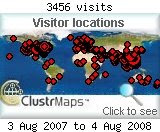Last June 25, 2007, media partners from Tawi-Tawi were ambushed. One of them, Vicente Sumalpong, otherwise known as "Enteng" among his peers, was killed while Maria Vema G. Antham was wounded and currently in the hospital.
To Enteng's family, our deepest condolences.
Below is an article culled from inquirer.net, where Cecil Abuy, area media coordinator for the media team in Tawi-Tawi, was quoted.
Gov’t radio broadcaster slain in Tawi-Tawi
June 25th, 2007
By Nonoy Espina, Thea Alberto
JOLO, Philippines — A broadcaster for state-run radio was killed Monday in an attack in the southern Philippines that also left one wounded, according to reports culled by INQUIRER.net.
Vicente Sumalpong, a senior reporter of the government-owned Radyo ng Bayan (People’s Radio) in Tawi-Tawi, was attacked at about 8 a.m. by an unidentified number of gunmen in the provincial capital Bongao, according to reports.
In a telephone interview, Tawi-Tawi police said a lone gunman had carried out the attack while Vema Antham, a co-worker, who was with Sumalpong when he was killed, claimed that there was more than one.
Sumalpong was declared dead on arrival at the Datu Halun Memorial Hospital, said Antham, whom the broadcaster and his nephew, Totong Borja, had picked up at her residence where he was shot.
Interviewed by the Philippine Daily Inquirer by phone, Antham said she was unharmed because Sumalpong covered her with his body.
But Borja was injured on the left leg, said Antham.
“We are not hard-hitting journalists … we have no known enemies,” said Antham.
“He used to pick me every morning,” Antham said, adding that she could identify the gunmen if she saw them again.
“The shooting was so quick, I think it was over in less than 30 seconds. They quickly fled as we lay on the ground,” Antham said.
Chief Superintendent Joel Goltiao, Autonomous Region of Muslim Mindanao, police director, said in a phone interview that Sumalpong was apparently the target.
Goltiao confirmed that Sumalpong was not a hard-hitting journalist and the reason for his killing might not be work-related.
Goltiao said police were eyeing two other motives but refused to elaborate, pending further investigation.
Cecil Abuy, a reporter of RPN-9 in Zamboanga City, said the ambush was “an attack against freedom of expression.”
“These two guys are not hard-hitting journalists, they are dedicated peace advocates and have never been involved in any controversy,” Abuy told the Inquirer, parent company of the INQUIRER.net.
Abuy said the two have no known enemies, either personal or work-related.
John Manalili, deputy director of the Bureau of Broadcast Services, a government agency that runs the radio, urged police and the military to promptly investigate the killing.
“We hope they can set the record straight lest some sectors link this to extrajudicial killings,” he said.
President Gloria Macapagal Arroyo’s administration has been criticized at home and abroad for a rising number of unsolved killings of left-wing activists, government critics, and journalists.
Arroyo, in a recent dialogue with media groups, ordered the designation of a special prosecution team to handle the media killings. She also has promised to eradicate what she called a generations-long cycle of political murders.
The ambush against Sumalpong would make him the fourth journalist killed this year, the 53rd since President Gloria Macapagal-Arroyo came to power in 2001, and the 90th since the restoration of most democratic institutions in 1986, National Union of Journalists of the Philippines (NUJP) chairman Jose Torres Jr. said.
At least two journalists were killed earlier this year and 12 murdered in the course of their work last year, the NUJP said.
The human rights group Karapatan has reported more than 800 activists killed and another 200 abducted by suspected security forces. Most of the victims are from left-wing groups branded by the military as fronts for a 39-year communist insurgency.
Torres condemned the killing of Sumalpong and demanded immediate government action on the case.
The killing of journalists “has gone on for too long,” said Torres.
“This issue goes beyond the safety and lives of media practitioners.The greater issue here is whether this government is truly committed to democracy and freedom,” Torres said.
“Unless we see concrete action against journalists’ killers and unlessPresident Arroyo issues the unequivocal order to stop the deliberate targeting of the press, which we have long demanded from her, that commitment will ever be in doubt,” he added.
International media watchdog organizations such as Reporters Without Borders and the International Press Institute have labeled the Philippines as the most dangerous place for news professionals next to Iraq.












